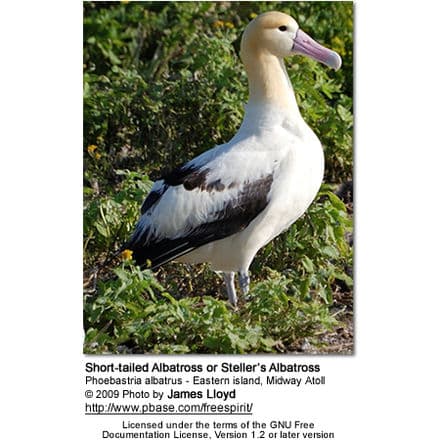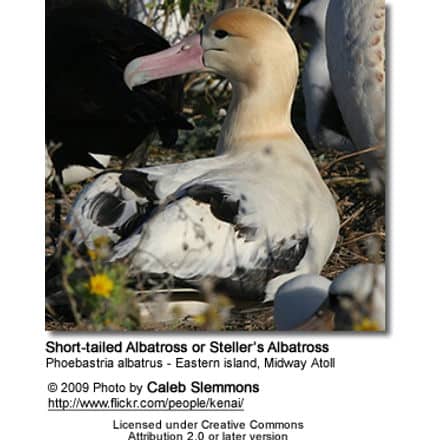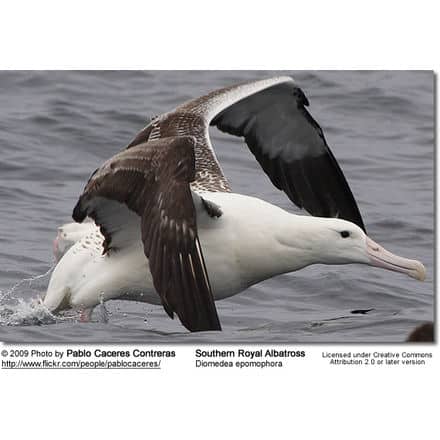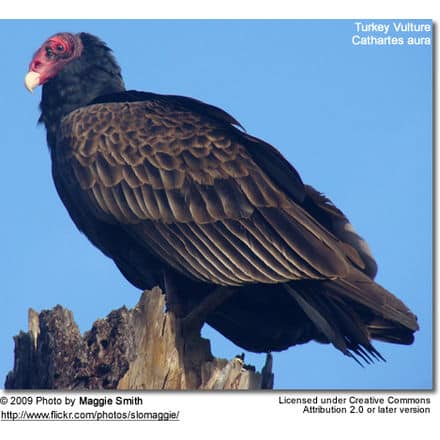Short-tailed Albatrosses or Steller’s Albatrosses
Albatross Information
The Short-tailed Albatrosses or Steller’s Albatross, Phoebastria albatrus, is a large rare seabird from the North Pacific. Although related to the other North Pacific albatrosses, it also exhibits behavioral and morphological links to the albatrosses of the Southern Ocean. It was described by the German naturalist Peter Simon Pallas from skins collected by the intrepid Georg Wilhelm Steller (after whom its other common name is derived). Once common, it was brought to the edge of extinction by the trade in feathers, but with protection has recently made a recovery.
Description
The Short-tailed Albatrosses is a medium sized albatross, with a wingspan of 215–230 cm (85–91 in), a length of 84–94 cm (33–37 in) and a body weight that can be 4.3–8.5 kg (9.5–19 lb).
Its plumage as an adult is overall white with black flight feathers, some coverts, as well as a black terminal bar on its tail. It has a yellow-stained nape (back of the neck) and crown. Its bill is large and pink; however, older birds will gain a blue tip.
The juveniles are an all-over brown colour, and they will whiten as they mature, in about 10 to 20 years.
Similar Species ID:
It can be distinguished from the other two species of albatross in its range, the Laysan Albatross and the Black-footed Albatross by its larger size and its pink bill (with a bluish tip), as well as details of its plumage. Contrary to its name its tail is no shorter than that of the Laysan or Black-footed, and is actually longer than that of the other member of the genus Phoebastria, the Waved Albatross.
Range and habitat
Short-tailed Albatrosses now nest on only two islands, with the majority of birds nesting on Torishima, and the remainder nesting on Minami-kojima in the Senkaku Islands. During non-breeding season they range across the North Pacific, with the males and juveniles gathering in the Bering Sea, and the females feeding off the coast of Japan and eastern Russia. They can also be found as far east as California. In fact, the Short-tailed Albatross is seen on a number of the United States’ state endangered species lists including Washington State.
The Short-tailed Albatrosses has been extirpated from Kita-no-shima, Parry Island, Kobishi, Senkaku Islands, and Nishino Shima, Yomejima, and Mukojima, Bonin Islands.
Feeding
The Short-tailed Albatrosses feeds mainly on squid, but will follow ships for their discarded offal (= entrails and internal organs of butchered animals).
Reproduction
This albatross historically preferred to nest on large open areas near stands of the grass, Miscanthus sinensis.
Conservation
| Breeding Location | Breeding Pair | Trend |
| Torishima | 1,922 adults | up from 25 since 1954 |
| Minami-kojima | 442 | Unknown |
| Total | 2,364 | 79% increase over 76 years |
The IUCN classifies this species as vulnerable, with an occurrence range of 34,800,000 km2 (13,400,000 sq mi) and a breeding range of 9 km2 (3.5 sq mi).
The Short-tailed Albatross came perilously close to extinction. They were hunted on an almost industrial scale for their feathers in the later half of the 19th century, with some estimates claiming upward of 10 million birds hunted. By the 1930s the only population left was on Torishima, between 1927 and until 1933 hunting continued when the Japanese government declared the ban of hunting to save the species, after which the albatrosses stopped breeding on the island. At this point the species was assumed to be extinct and research became impossible with the outbreak of World War II. On 1949 an American researcher arriving on this island declared the species to be extinct, but an estimated 50 individuals, most likely juveniles, survived at sea (all albatross species take a long time to reach sexual maturity and will not return to their natal colony for many years). After the return of the birds they were more carefully protected, and the first egg was laid by the returning birds in 1954. Varieties of albatross decoys were placed around on the island after it was discovered that like other albatross species, this species also were enticed to breed if placed in a group.
Today, longline fisheries, and volcanic eruptions on Torishima are the largest threats; however, introduced predators, environmental contaminants, soil instability, and extreme weather are also threats.
There are many measures underway to protect this species. Japan, Canada, and the USA list this bird as a protected species. Torishima is a National Wildlife Protection Area, and native plant species are being transplanted to assist in nesting. Also, most commercial longline fisheries use bycatch mitigation devices.
Taxonomy
Short-tailed Albatrosses are a type of Albatross that belong to Diomedeidae family and come from the Procellariiformes order, along with Shearwaters, Fulmars, Storm-petrels and Diving-petrels. They share certain identifying features. First, they have nasal passages that attach to the upper bill called naricorns. Although the nostrils on the Albatross are on the sides of the bill. The bills of Procellariiformes are also unique in that they are split into between 7 and 9 horny plates. Finally, they produce a stomach oil made up of wax esters and triglycerides that is stored in the proventriculus (stomach). This is used against predators as well as an energy rich food source for chicks and for the adults during their long flights. They also have a salt gland that is situated above the nasal passage and helps desalinate their bodies, due to the high amount of ocean water that they imbibe. It excretes a high saline solution from their nose. Going back in time, fossils of albatrosses from the mid-Pleistocene in Bermuda and North Carolina are considered to be closest to the Short-tailed Albatross.
Copyright: Wikipedia. This article is licensed under the GNU Free Documentation License. It uses material from Wikipedia.org … Additional information and photos added by Avianweb.
Photo, Video, and/or Article contributions are welcome! Upload articles and images.
Please Note: The images on this page are the sole property of the photographers (unless marked as Public Domain). Please contact the photographers directly with respect to any copyright or licensing questions. Thank you.





